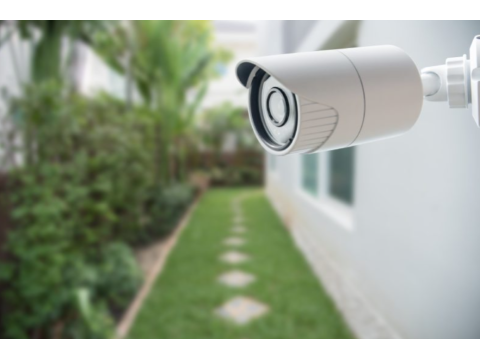Video Surveillance for a Country Home
Setting up video surveillance for a country home can be done in two main ways:
- Autonomous Surveillance (without remote access).
- Internet-Connected Surveillance (with remote access).
Autonomous Surveillance
Ideal Setup:
- Use analog cameras (AHD, TVI, CVI), which are cost-effective and reliable.
- Record video locally on a DVR installed in the house.
Key Components:
- Cameras: Analog models are affordable, reliable, and provide adequate resolution.
- DVR: Stores video locally and is paired with a monitor for viewing footage.
- Power Supply: Cameras require a dedicated power supply; DVRs typically come with adapters.
- Hard Drive: Choose a capacity based on recording needs, such as resolution and retention period.
Usage:
- Motion detection reduces storage needs by recording only when movement is detected.
- Analyze recorded footage to review incidents or monitor activity from inside the house.
Remote Surveillance
Key Requirement: Internet connectivity at the property.
Recommended Approach:
- Utilize cloud services for seamless access to real-time feeds and archives.
- Combine cloud recording with a DVR for dual backup.
Equipment Options:
- IP Cameras: Directly connect to the internet for cloud integration.
- Internet Connection Options:
- Wired (Ethernet): Connect cameras via twisted pair cables to a router.
- Wireless (3G/4G): Use a router with an integrated modem for wireless connectivity.
Steps to Set Up:
Wired Connection:
- Connect cameras to the router using Ethernet cables.
- Configure the system via the cloud service’s dashboard.
Wireless Connection:
- Use a router with built-in modem and RJ ports or Wi-Fi cameras.
- Pair cameras to the router via radio signals or Ethernet, depending on compatibility.
Considerations:
- Free cloud plans typically allow live viewing but may lack archival storage.
- Upgrade to premium plans for full functionality, including remote playback and alerts.
Choosing the Right System
Autonomous Systems:
- Best for monitoring within the property and reviewing footage later.
- Cost-effective and simple to set up.
Remote Systems:
- Ideal for real-time monitoring from anywhere.
- Requires a reliable internet connection and additional investment in cloud services.
Video surveillance for a country home provides essential security and peace of mind. Whether you choose an autonomous setup or a remote-access system, tailor your solution to meet your specific needs and property requirements.
Apartment Video Surveillance Installation
09/01/2025

